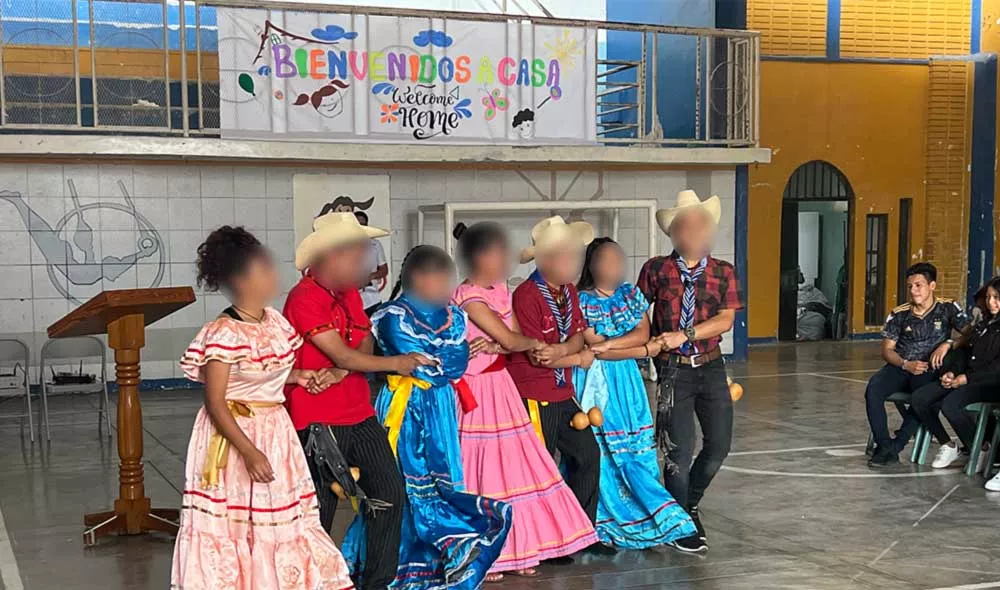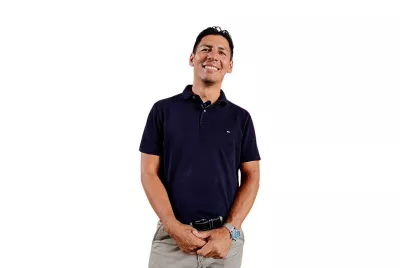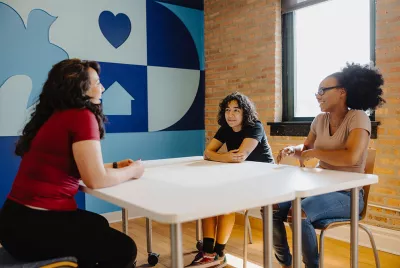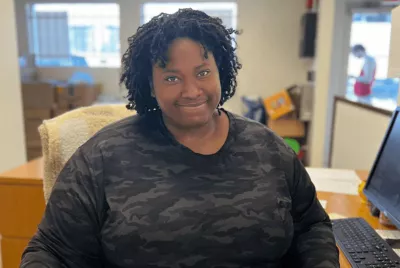Invisible Links of Hope

Felipe*, 14, and his sister Valentina*, 13, set out with their mother from their native Venezuela to the United States, their ultimate destination. Like many migrants forced to abandon their homelands, they saw the U.S. as a kind of Promised Land, where life would be better and safer. The way there was not so, and they endured hunger, excessive heat, excessive cold; they hid in mountains and forests by day and traveled under the cover of darkness by night.

There was one hardship, though, that they never imagined. About halfway through the journey, in Honduras, Felipe and Valentina’s mother fell gravely ill and died. The children were alone now, and Valentina, too, was ill. So, when a child welfare official at the hospital asked if they would like to go to Covenant House Honduras, Felipe, speaking for them both, said yes, not knowing what they would find there or what kind of place it would be.
“When they arrived, their eyes were filled with so much pain, so much sadness. It was impossible not to be moved by them,” says Grecia Moreno, coordinator of CHH’s Child and Adolescent Rights Observatory, a publication that documents the situation of children and teens in the country. “Their journey to Honduras was very hard, not only because of the loss of their mother but because of all they had endured along the way.”
At Covenant House Honduras, she says, Felipe and Valentina began to write a new story, with the help of our staff and residents. “Educators, psychologists, social workers, and our girls, boys, and teens forged invisible links of hope for them.”
Grecia was so moved by Felipe and Valentina’s journey to and through Covenant House Honduras, where they resided for two years, she wanted to share with the international community the deep difference those “invisible links of hope” make in the life of children and adolescents who have endured the unthinkable on the migrant trail when their only aim was safety and a chance at life.
Her article, the Spanish title of which translates to“Children on the Move: Impact of Children and Adolescents’ Invisible Links Beyond National Boundaries,” was published in the journal Infancia by the Interamerican Institute on Children and Adolescents and the Organization of American States.
It documents why children and families flee their homelands, the effects of a dangerous journey on children's health and well-being, and the impact of the invisible links of hope they experience at drop-in centers and shelters like Covenant House Honduras that receive them with love and understanding. Covenant House International asked Grecia to explain.
CHI: Why did you choose to write about this theme of the invisible links of hope?
GRECIA: The invisible links are forged in the places and by the people who become hope for child migrants who find themselves outside of their home countries and arrive at drop-in centers and shelters with their hearts broken because they’ve lost friends, schoolmates, and family. The invisible links are created in the tremendous work carried on in drop-in centers and shelters, where they find a refuge that not only provides support for their physical recovery but, also, their emotional recovery. That is the case of Felipe and Valentina, who found hope at Covenant House Honduras, a light in the very dark tunnel through which they’d journeyed.
CHI: You note in the article that grief is rarely discussed in terms of the trauma that child migrants experience. Say more, please.
GRECIA: The article underscores that grief is a process that children begin to experience from the moment they leave their country of origin. The grief of leaving behind your closest family members, friends, classmates, even the taste of local foods, customs, and everything that represents security, home, and community.
On the other hand, on the migrant trail, children suffer hunger; they’re exposed to heat, cold, the darkness of night; and they’re faced with the uncertainty of not knowing what will happen to them. This generates a lot of stress, anxiety, and a wound that is hard to heal.
In the case of Felipe and Valentina, they lost the most important person in their lives. Their mother represented security and protection. But they found themselves alone, in an unknown country, among unknown people.
The wonderful thing is that amid the chaos of their lives there are organizations that are a beacon of hope. They can’t make up for everything, but they can help the children to rally, to continue moving their lives forward, and that’s what we mean by “invisible links.” They are forged in the great work that organizations like Covenant House Honduras are doing, sometimes anonymously, sometimes not very visibly, but in these spaces, migrant children find hope and support.
CHI: How is Covenant House Honduras uniquely prepared to facilitate that deep sense of connection for migrant children who come into our care?
GRECIA: CHH’s multidisciplinary staff includes psychologists, social workers, educators, and human rights defenders, who are prepared to offer care with a focus on rights, protection, and the restitution of family and community connections. And we prioritize psycho-emotional care and personalized attention, which allows the children to feel heard, understood, and valued.
We also promote safe and participatory spaces, where the children can rebuild their identity, deepen their self-confidence, and develop a sense of belonging. We encourage interculturality and respect for each child and adolescent’s place of origin and experiences, and this facilitates their integration and sense of connection in our center and in Honduran society.
It’s important to remember that migrants are people with rights, their lives deserve to be treated with respect, they deserve to be in safe places and receive medical and psychological care.
CHI: What else would you like to share?
GRECIA: Everyone can see the wounds that break the skin, but the interior wounds no one can see. And that’s what people who migrate from their home countries experience. Migration mainly affects children, who can’t understand why it's happening. Some cling to their stuffed animals, or to a doll, or to a memory of their country and the people who were close to them there — people they don’t know if they’ll ever see again.
The places and people they meet on the migrant trail are moments of joy that become invisible links. Even though their stay is temporary, they build good memories in those comforting and hopeful spaces. Felipe and Valentina are no longer with us; they’re back in Venezuela. But they carried beautiful memories from Covenant House Honduras, which, in the worst moment of their lives, became invisible links of hope. Covenant House Honduras has become that place where those invisible links are forged for many children from Venezuela, Colombia, Panama, Nicaragua, and Honduras.
My message is: Any small gesture made with love and understanding changes lives.
*The children’s names have been changed for their privacy.
Covenant House in Latin America
Covenant House has been present in Latin America for nearly 45 years, and last year, we reached over 11,200 children and adolescents across the three countries where we work. Besides our direct services, Covenant House in Latin America also drives lasting, systemic change through prevention programs, public campaigns, and legislative advocacy. Learn more about how we support children and teens in Latin America.
Here are two actions you can take today to help support the young people at Covenant House in Latin America:
- Donate. The most immediate and impactful way to support our work in Latin America.
- Stay connected. Sign up to receive email or SMS alerts so you can be the first to hear about updates and ways you can help youth in our care.
No matter how you get involved, we appreciate your support in this work.
Get news, stories, and insights delivered right to your inbox.
You Might Also Like...
All news & insightsHelp Build Brighter Futures for our Youth
Your gift today provides services and support to young people on their journey toward sustainable independence and a hope-filled future.


